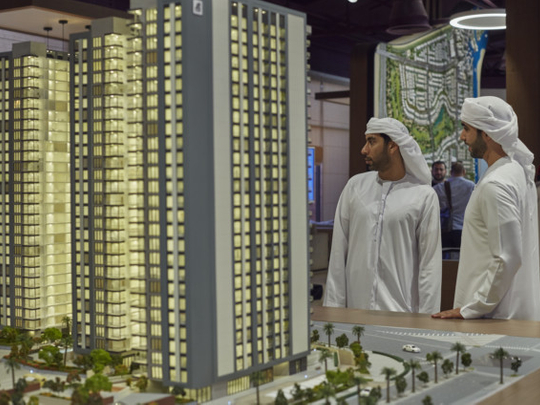
Price declines continued in Dubai for residential property during the first quarter, averaging 1 per cent year-on-year for apartments and villas. While the pace of decline has slowed in comparison to the same period last year, the continuing declines over the last 18 months have impacted the feasibility of new developments that are now facing declining profit margins.
Meanwhile, consumer demand continues to shift in favour of communities with existing infrastructure and amenities, with developer track record becoming a key factor in maintaining price and rent levels. Developers have begun responding to this reality through differentiation at several levels of their product offering, ranging from launch price to unit sizes, payment plans, development phasing and more. The era of “build and they will come” is thus making way for products that are more responsive to end-user demand and catering to a wider base of buyers, especially those with a longer-term view of Dubai’s potential as a mature real estate investment destination.
Pricing
The most significant change in residential developments over the last two quarters has been the release of lower-priced inventory of villas, town houses and the entry of mid-income housing. Projects like Aldar’s The Bridges on Reem Island, Abu Dhabi, released at Cityscape earlier this year, or Emaar’s Mira town houses in Reem community in Dubai have targeted a new segment of the market, with starting prices of Dh450,000 and Dh1.75 million respectively.
According to the Dubai House Price Index by Property Monitor, which tracks residential property prices across the emirate to derive average sales prices for apartments, villas and town houses, in the first quarter of 2014 the average residential prices in Dubai surpassed Dh3 million for the first time since 2008, and have since averaged between Dh2.5 million and Dh3.7 million.
However, in the first quarter this year, the average price of villas and town houses stood at Dh2.2 million as a result of significant inventory of lower-priced villas with a starting price of Dh1 million. This trend is expected to continue, with developers beginning to target a new segment of buyers, including those within the Dh7,000-Dh10,000 monthly income bracket.
Product offerings
Developers are also focusing on more efficient design, optimal unit size mix and amenities that are more closely linked to end-user demand. Products such as Danube’s Starz Tower in Al Furjan, with furnished apartments that can be converted from one- to two-bedders, are being targeted towards both investors and end users.
Apart from standard amenities, consumers have also shown an interest in facilities such as visitor parking, 24-hour maintenance and spacious layout.
Even the unit mix within projects is beginning to reflect buyer demand, with studio, one-bedroom and two-bedroom units taking the lion’s share of the proportion in most developments. Some recent projects have also focused on this aspect by releasing only smaller units, such as Select Group’s Studio One in Dubai Marina, which is a studio-only serviced property targeted at millennials.
Payment plans
As the buyer mix is slowly tilting towards the end-user segment, payment plans have also evolved. A more flexible payment plan helps developers sell more units quickly and at a higher price per square foot. The downsides are the delayed receipt of revenue, a greater need to finance construction through other means and an increase in risk of default. So, for each project, developers need to consider the trade-offs between price, speed of sales, estimated revenue cash-flow, marketing budget and the availability, cost and effect of having to use alternative funding options, such as bank loan and equity/joint venture partnership.
Payment plans in the boom years leading to 2008 typically required 80 per cent payment during construction. Since the real estate price correction following the 2008 global financial crisis, payment plans have become more attractive to investors, with developers sharing more of the development risk. In the current market, payment plans vary from a significant proportion during construction, to only a small proportion, say 20-30 per cent, during construction, with the remainder on completion or over a period following completion.
These include longer-term payment plans such as the five-year plan by Damac for villas in Akoya Oxygen with a 20 per cent down payment and the balance over nine instalments, the 20-80 and 30-70 plan for Select Group’s Marina Gate Residences I and II, Danube’s 1 per cent or Dh4,500 per month plan for Resortz in Arjan, and special offers such as the Ramadan offer by Nshama with a 20-80 payment plan.
Launch phasing
Developers are choosing to avoid flooding the market with units that cannot be absorbed and are instead phasing handover. Historically, project delays were primarily a result of financing issues and extraneous factors impacting the residential market. However, most delays over the last 12-18 months stem from a conscious, staggered delivery schedule being set by developers. This tends to act as a supply control mechanism with handovers being closely aligned and responsive to demand and project sales potential.
The sales launch of off-plan units is also being carried out in a phased manner. For instance, Aldar released two of the six towers in The Bridges during Cityscape and the third soon after in response to absorption of the first release.
Marketing strategy
With changing consumer profile and demand dynamics, the marketing strategy for each development also needs to be differentiated. Creating pre-launch interest around the development and positioning it differently from existing projects can drive value upwards. To achieve the estimated sale rates and faster absorption, the project must be marketed with a focus on the unique aspects of its location, amenities, views and design.
Developers from the region are also increasingly participating in international trade events and road shows in countries like India, Singapore and the UK.
These new developments in the residential market are aided by regulations introduced by the Real Estate Regulatory Agency to curb deceitful marketing activities and assure homebuyers.











